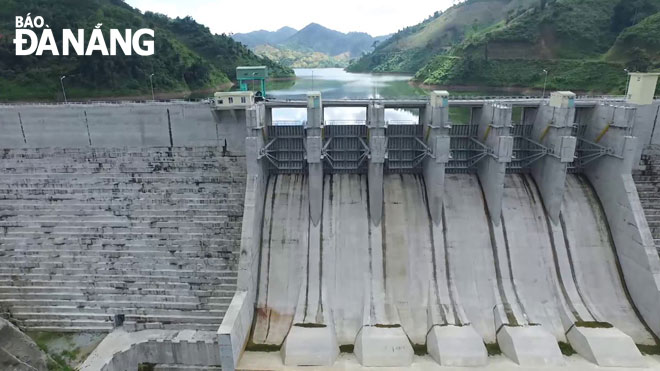Measures to address saline intrusion causing tap water shortage
Upon request of the Quang Nam Province Department of Agriculture and Rural Development, the Song Bung 4 hydropower reservoir will stop discharging water into the Vu Gia River from 18 - 20 February, and from 26 - 28 February.
 |
| The Song Bung 4 hydropower reservoir stops discharging water into the Vu Gia River for 6 days |
Also, the hydropower reservoir will reduce the volume of water discharged into the Vu Gia River over the remaining days of this month.
Mr Truong Xuan Ty, Deputy Director of the Quang Nam Province Department of Agriculture and Rural Development, explained the reason that the water level in Song Bung 4 hydropower reservoir is now lower than the water level specified in the inter-reservoir operating process on the Vu Gia - Thu Bon river basin.
In addition, Mr Ty noted that the hydropower reservoir had been asked to stop discharging water into the Vu Gia River for 6 days, and to reduce the volume of discharged water in the remaining days of February.
However, this act will raise concerns about an increased risk of saltwater intrusion in the Cau Do (Red Bridge) River which will cause tap water shortages across the city.
Between 13 and 17 February, the Song Bung 4 hydropower reservoir upstream of the Vu Gia River did not discharge water in accordance with their operation process. As a result, the water level at the downstream area of the Vu Gia River remained at a very low level.
In particular, in the afternoon of 17 February, the Ai Nghia River in front of the namesake Public Pumping Station in Quang Nam Province’s Dai Loc District dried up. As a result, pumping stations could not operate to ensure water supplies for irrigation purpose as normal.
Besides, the water level of the Yen River upstream the An Trach Dam was recorded at only 1.59m, 0.41m lower than the allowed limits.
 |
Currently, the city is planning to close all sluice gates of the An Trach Dam in order to operate pumping stations to ensure enough tap water supply for the daily lives, and the agricultural and industrial production purpose of local citizens. However, this will result in the hike in the salinity levels at the Cau Do River and the Cau Do Water Supply Plant’s raw water intake.
Thanks to the operation of the temporary anti-saline intrusion dam built on a section of the Cam Le River, the salinity levels at the Cau Do Water Supply Plant’s raw water intake has been recorded at only about 1,000mg/l. Meanwhile, the salinity level at the downstream area of the anti-saline intrusion dam can be up to 10,000 mg/l.
Therefore, the Da Nang Water Supply Company (DAWACO) is operating the An Trach Pumping Station at full capacity to ensure water supply for the Cau Do Water Plant.
If the water level on the Yen River gets too low, the operation of An Trach Irrigation Station will not be ensured.
In attempt to deal with the problem, relevant local agencies will dredge drainage systems and canals, as well as build temporary dams in the villages of La Bong, Bac An, Yen Ne and Cam Ne in Hoa Tien Commune, Hoa Vang District.
In addition, anti-drought diesel pumps will be installed at the Le Son Village and the Hoa Tien Agricultural Cooperative 1 in order to ensure the water supply for the agricultural and industrial production purposes in the city.
By HOANG HIEP - Translated by MAI DUNG